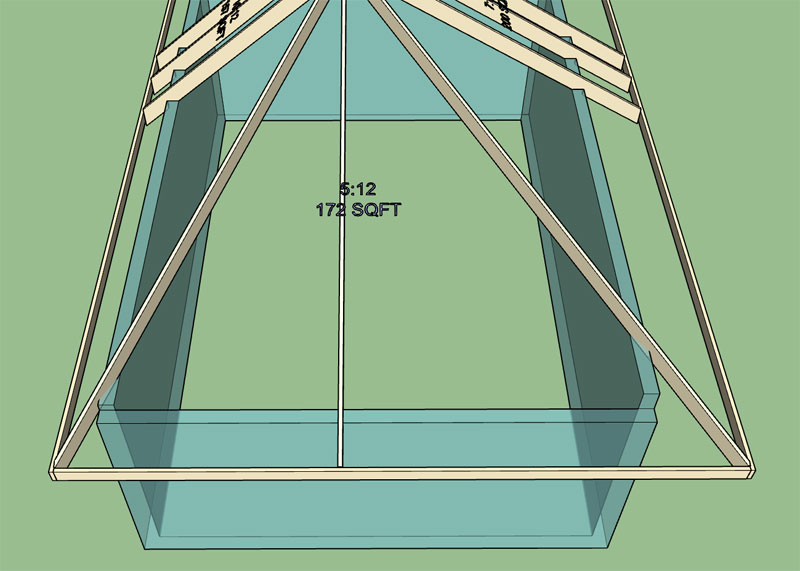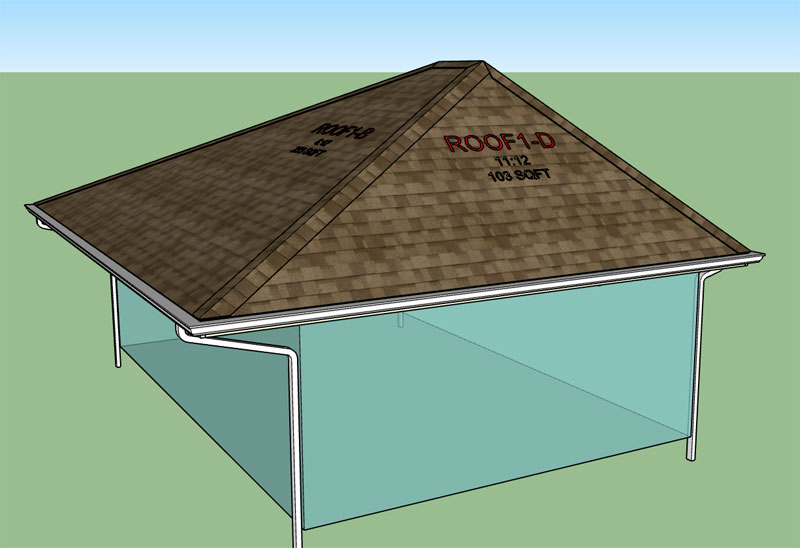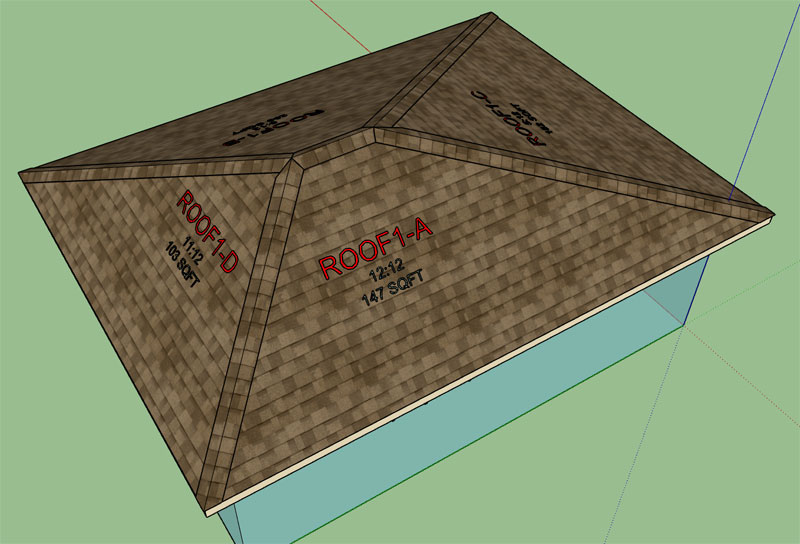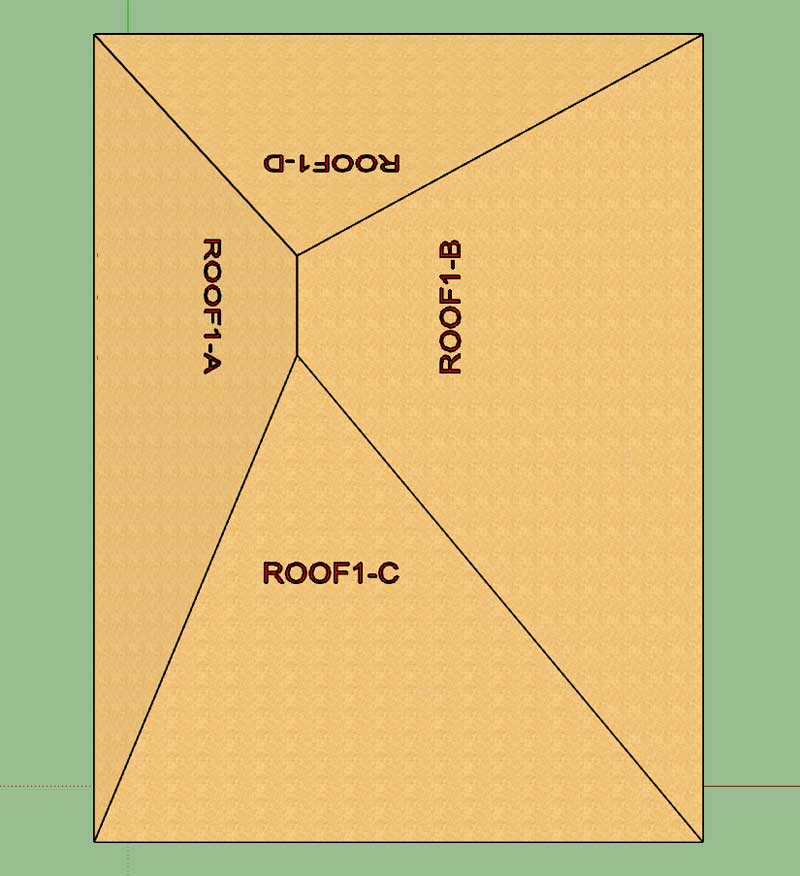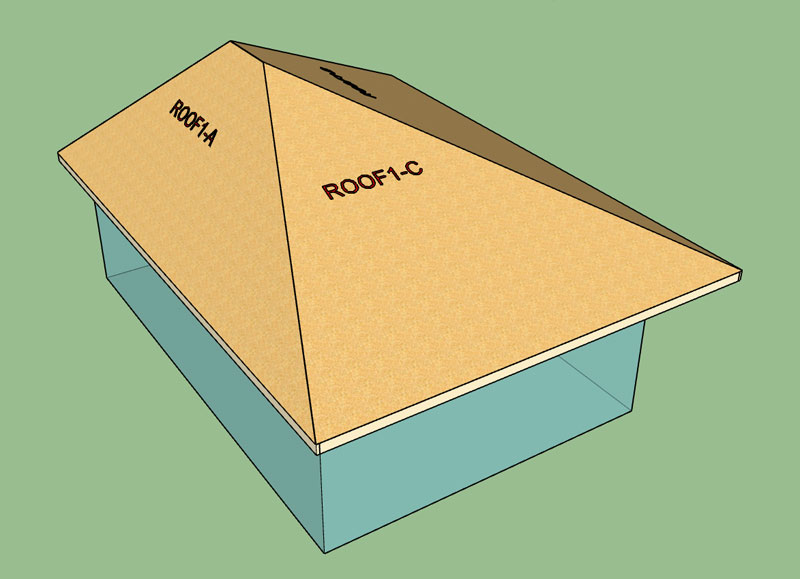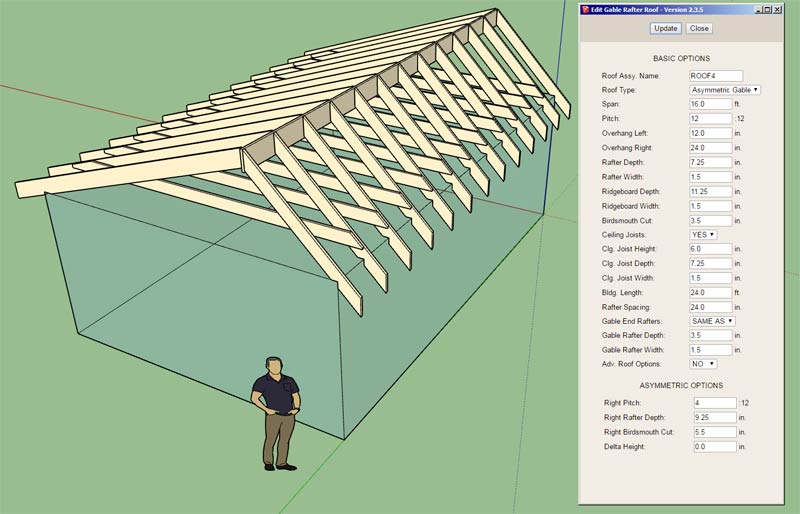Actually I stand corrected. The sheathing does center up on the ridge board provided that you do vertically offset the opposing common rafters as shown in the previous images. A top down view shows the result:

If you don't vertically offset the commons and the pitch on plane A and B differ then the ridge board will not center up on the sheathing. For now I have it centering and a vertical offset, for future work I may provide an option to toggle between these two possible configurations.
Here is a view of the other side of the roof, note the different top plate heights and where the hip rafters land on them and the corners:
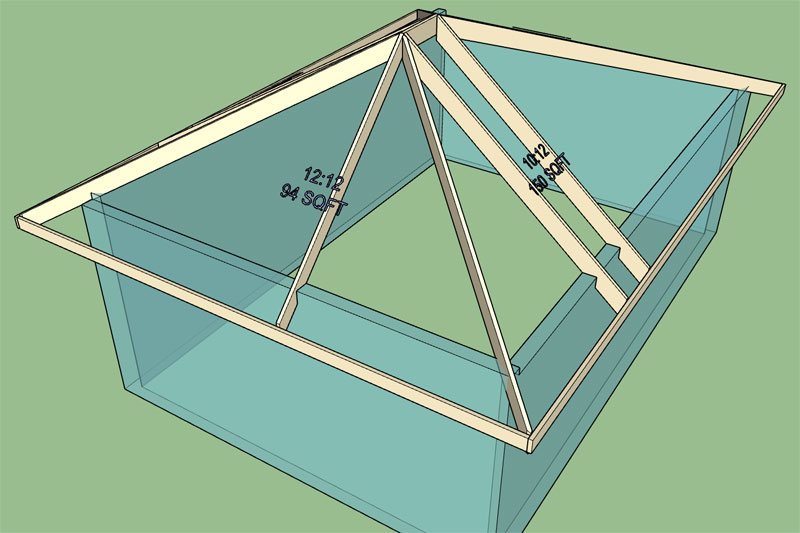
Better yet, go ahead and download my test model that was most recently generated by the new asymmetric module:
https://3dwarehouse.sketchup.com/model/5cac625a-b13a-41f0-b945-9603cbf47bc0/Asymmetric-Hip-Test-Roof

If you don't vertically offset the commons and the pitch on plane A and B differ then the ridge board will not center up on the sheathing. For now I have it centering and a vertical offset, for future work I may provide an option to toggle between these two possible configurations.
Here is a view of the other side of the roof, note the different top plate heights and where the hip rafters land on them and the corners:

Better yet, go ahead and download my test model that was most recently generated by the new asymmetric module:
https://3dwarehouse.sketchup.com/model/5cac625a-b13a-41f0-b945-9603cbf47bc0/Asymmetric-Hip-Test-Roof


